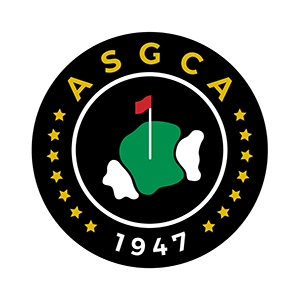Stephen Kay is principal of Stephen Kay/Doug Smith Golf Course Design of Egg Harbor, New Jersey. He has been an  instructor in the Rutgers Turfgrass program since 1985, teaching golf construction, design and surveying and has done renovation work at over 250 golf courses. Stephen has done work in the Kingdom of Bhutan and has extensive experience restoring the classic old designs of such great architects as Donald Ross, A.W. Tillinghast, Devereux Emmet, and Charles Banks. His select course portfolio includes The Hamlet at Willow Creek, Long Island, New York; Manhattan Woods Golf Club (with Gary Player,) in West Nyack, New York; Links of North Dakota in Williston, North Dakota; and, in New Jersey, Blue Heron Pines Golf Club, in Galloway, and Architects Golf Club, in Phillipsburg.
instructor in the Rutgers Turfgrass program since 1985, teaching golf construction, design and surveying and has done renovation work at over 250 golf courses. Stephen has done work in the Kingdom of Bhutan and has extensive experience restoring the classic old designs of such great architects as Donald Ross, A.W. Tillinghast, Devereux Emmet, and Charles Banks. His select course portfolio includes The Hamlet at Willow Creek, Long Island, New York; Manhattan Woods Golf Club (with Gary Player,) in West Nyack, New York; Links of North Dakota in Williston, North Dakota; and, in New Jersey, Blue Heron Pines Golf Club, in Galloway, and Architects Golf Club, in Phillipsburg.
When I was teaching at Rutgers University, one of my students approached me because they knew someone who was getting set to buy some land and build a golf resort.
“Would you be interested in designing a course in the Midwest?” the student asked me.
I considered it, but my wife, as I said, had just had a baby, and we’d just left the Midwest to make our home in New York, so I wasn’t keen on spending a lot of time traveling to North Dakota. But I knew a great shaper from Ohio, Marvin Schlauch. He was born in North Dakota and he didn’t mind going there, so I wouldn’t have to travel so much. Plus, he knew the landscape, physically and politcally.
There was no eighteen-hole course for hundreds of miles, which also intrigued me. The population of towns in North Dakota ranges from Bismark, population 70,000, to tiny hamlets with populations of four. Raw, unspoiled country.
So I phoned Marv, and it was on.
The developer was looking at three potential sites, so he took Marv on a Cessna to have a flyover look at all of them and decide which site would be best for a golf course. Marv picked the one he liked best as the contractor, which was the one the developer liked least, because it was the farthest from town.
But what a site! When I finally traveled to North Dakota to see the site, I became much, much more enthused about the project.
It was 250 acres right on Lake Sakakawea, which was a huge, two-hundred-mile long, seven-mile wide body of water created when a section of the Missouri River was dammed. A golf course built on this site would have views of the water from everywhere. The topography was something you’d see in Ireland: sandy soil all over the site, several feet deep without a rock in it! The entire state of North Dakota is clay and horrible soil – except for this one little, 250-acre hill with sandy loam soil. It was perfect for a golf course.
I stood up from a crouched position and just stood quietly in the middle of the special site, with the wind blowing across a flat gray sky. I looked around and realized that the Good Lord was about the let me build my first Top-100 golf course.
Just standing there, I could envision green sites, fairways, and tees on the landscape.
The actual design and construction of the golf course required very little more than just standing there and imagining it. We could not improve upon Mother Nature. We simply marked the center lines after surveying. We surveyed green sites and put down stakes for cut and fill.
We didn’t even need to change the grade for six of the greens. We just sprayed the field grass with Roundup, and tilled it. The entire construction process, for eighteen holes, required us to move only 7,000 yards of dirt.
Even with the minimal construction costs, it was difficult for the developer to raise money. We tried to help raise $1.25 million to develop the site. We got $300,000. The developer was going to drop the project.
“You have got to see this through,” I implored. “This will be a very special golf course. I could work until I’m 92 and never get a better site to work with.”
The owner didn’t believe me.
To put my money where my mouth was, and to get the project done, I left my fee on the table. So did the shaper. We used the $300,000 to pay for the laborers and to buy grass seed and fertilizer.
When the Links of North Dakota opened, with a small clubhouse, it was named second-best new golf course in America, and the best new affordable golf course” in the country. And it cracked the Top-100 best modern golf courses list.
